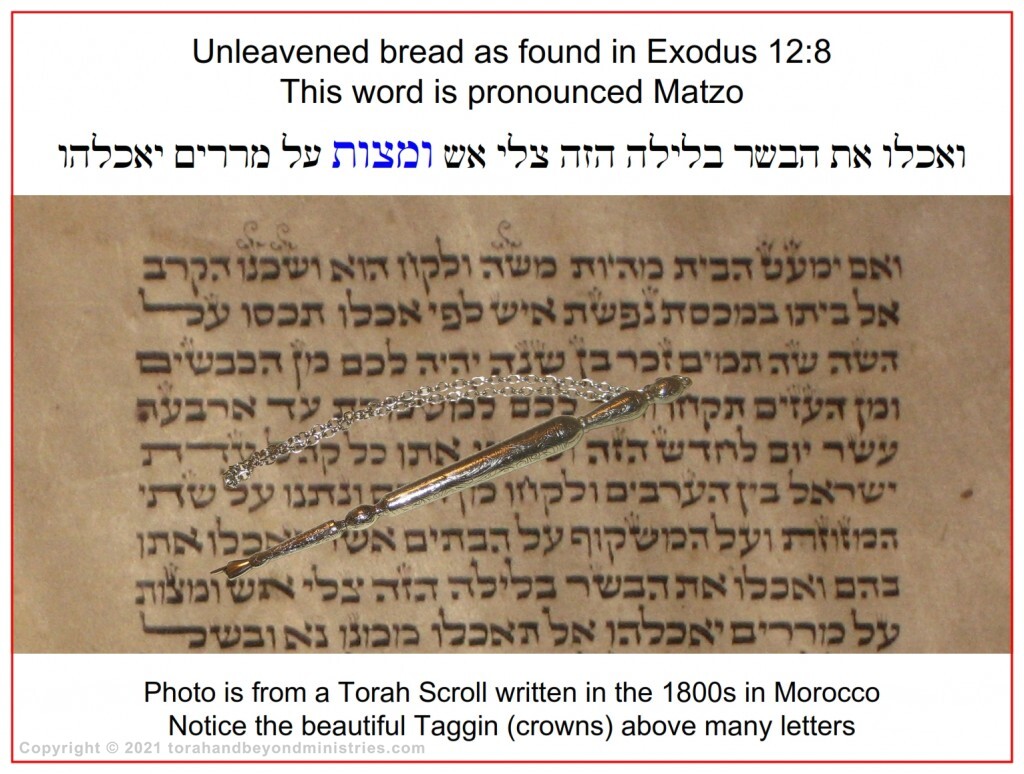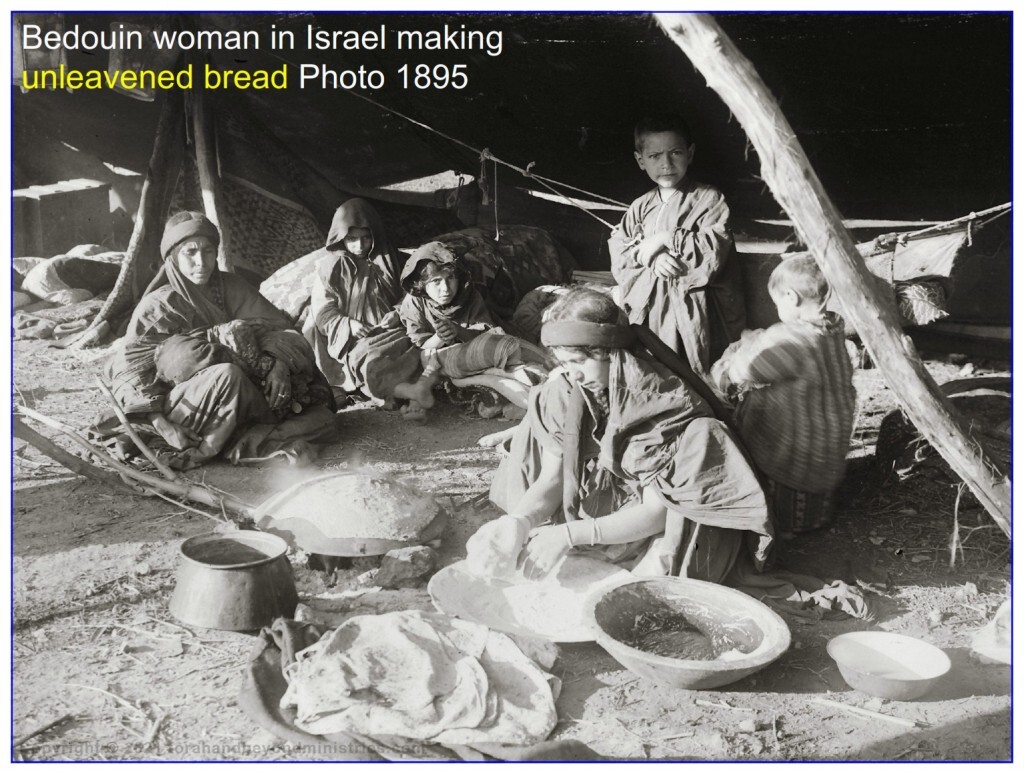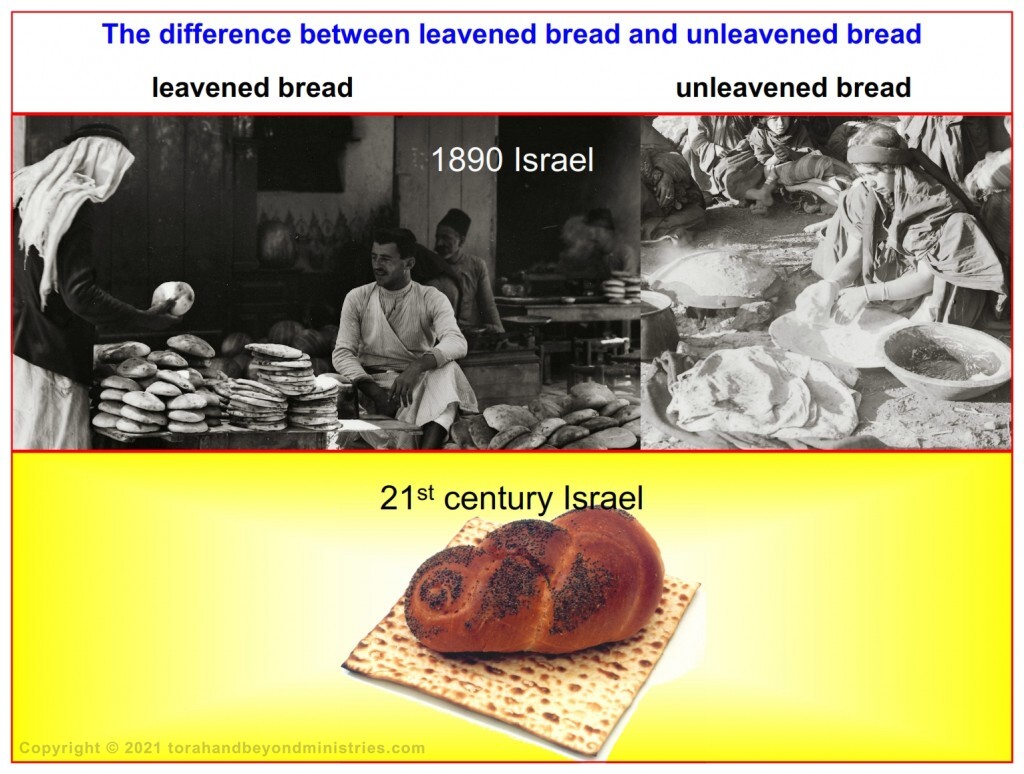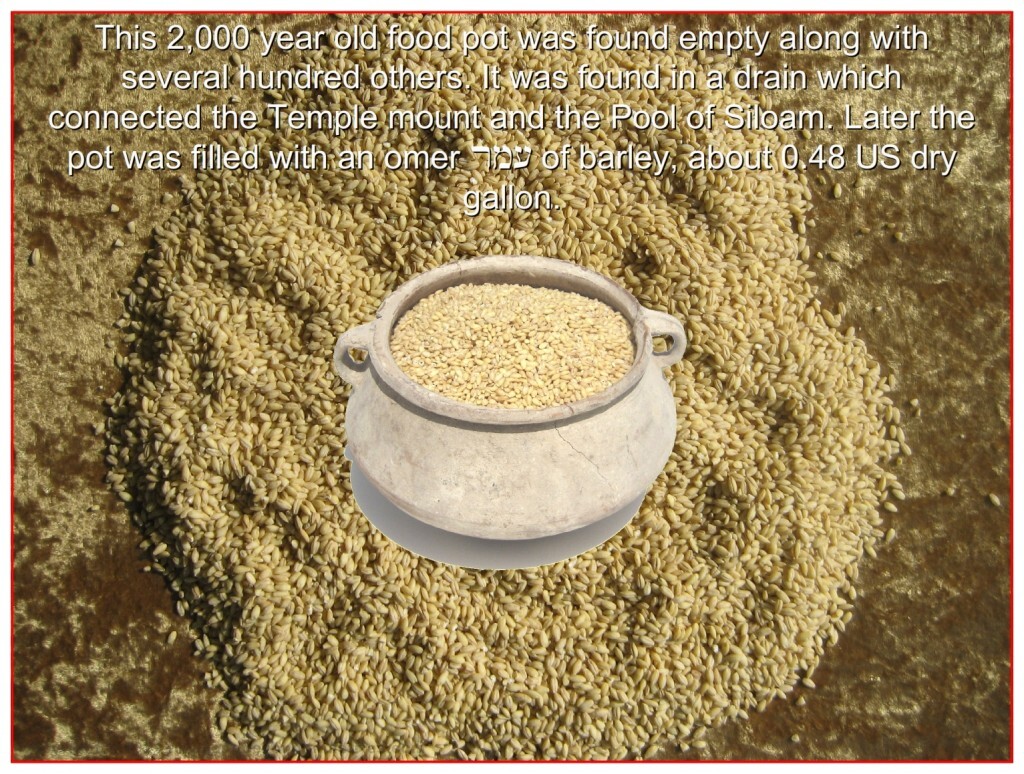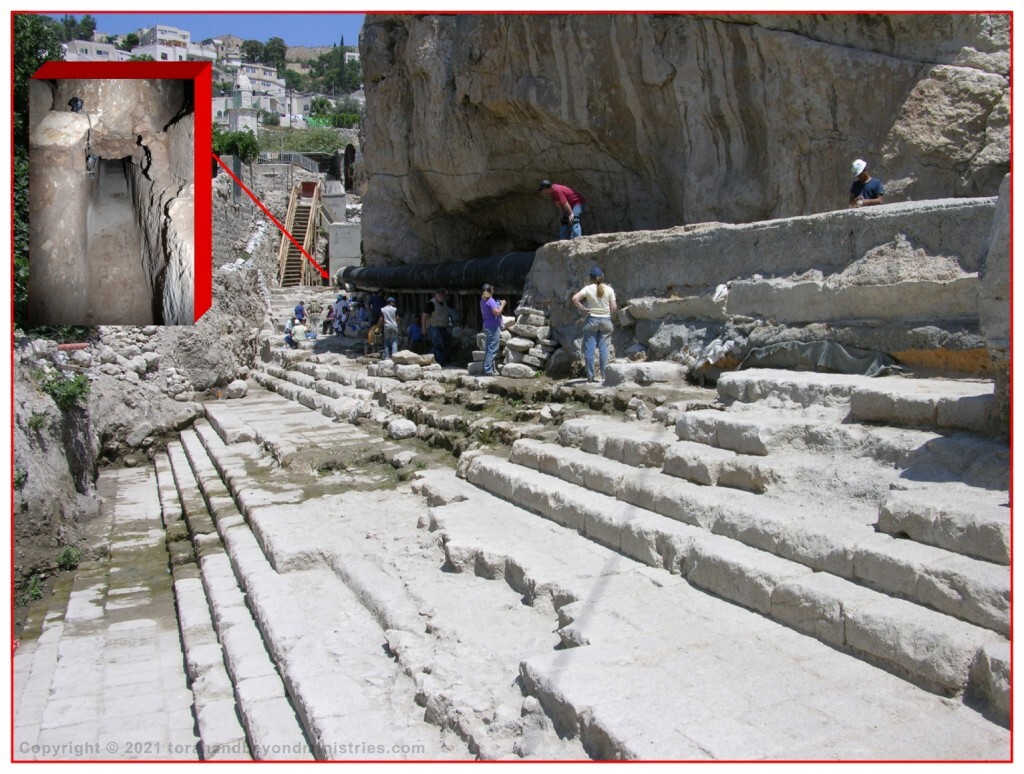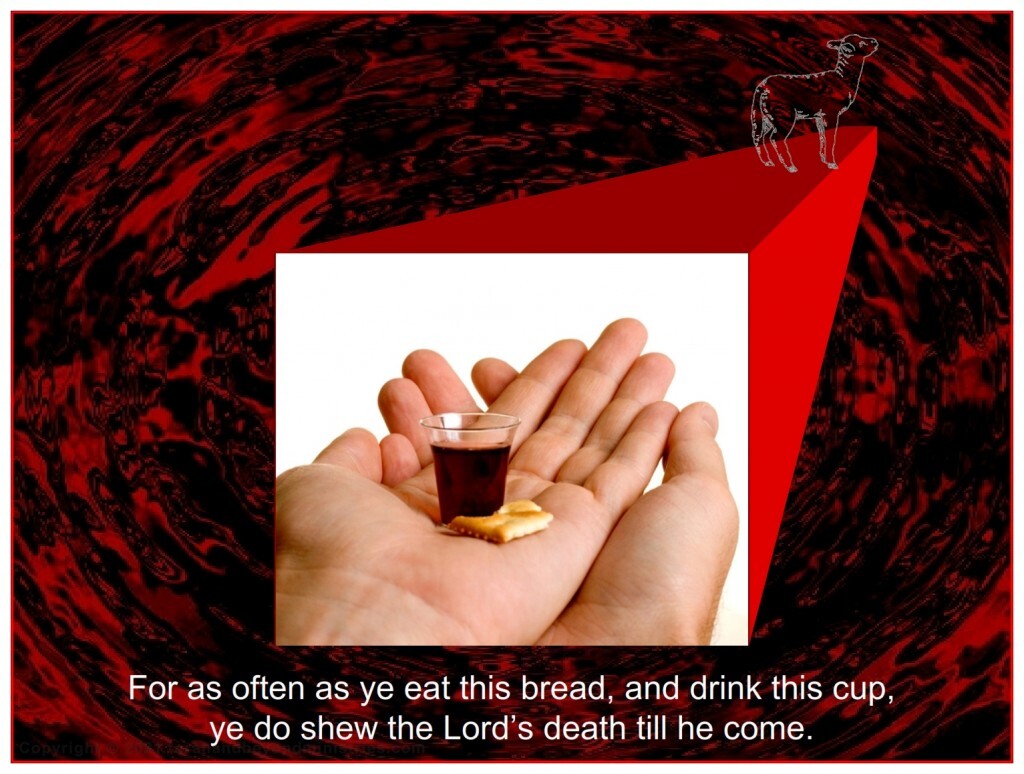Unleavened Bread
שׂה תמים זכר בן שׁנה יהיה לכם מן הכבשׂים ומן העזים תקחו
ואכלו את הבשׂר בלילה הזה צלי אשׁ ומצות על מררים יאכלהו
Exodus 12:5,8
5 Your lamb shall be without blemish, a male of the first year: ye shall take it out from the sheep, or from the goats: 8 And they shall eat the flesh in that night, roast with fire, and unleavened bread; and with bitter herbs they shall eat it.
Lamb from the Sheep or the Goats
Unleavened Bread – Matzo
Bitter Herbs – Maror
These are the only required foods that must be eaten to complete a Passover.
There may be other foods and drinks in addition to these, but the others are not required according to Exodus 12.
The only food forbidden throughout Passover is yeast as in the leavening agent for breads.
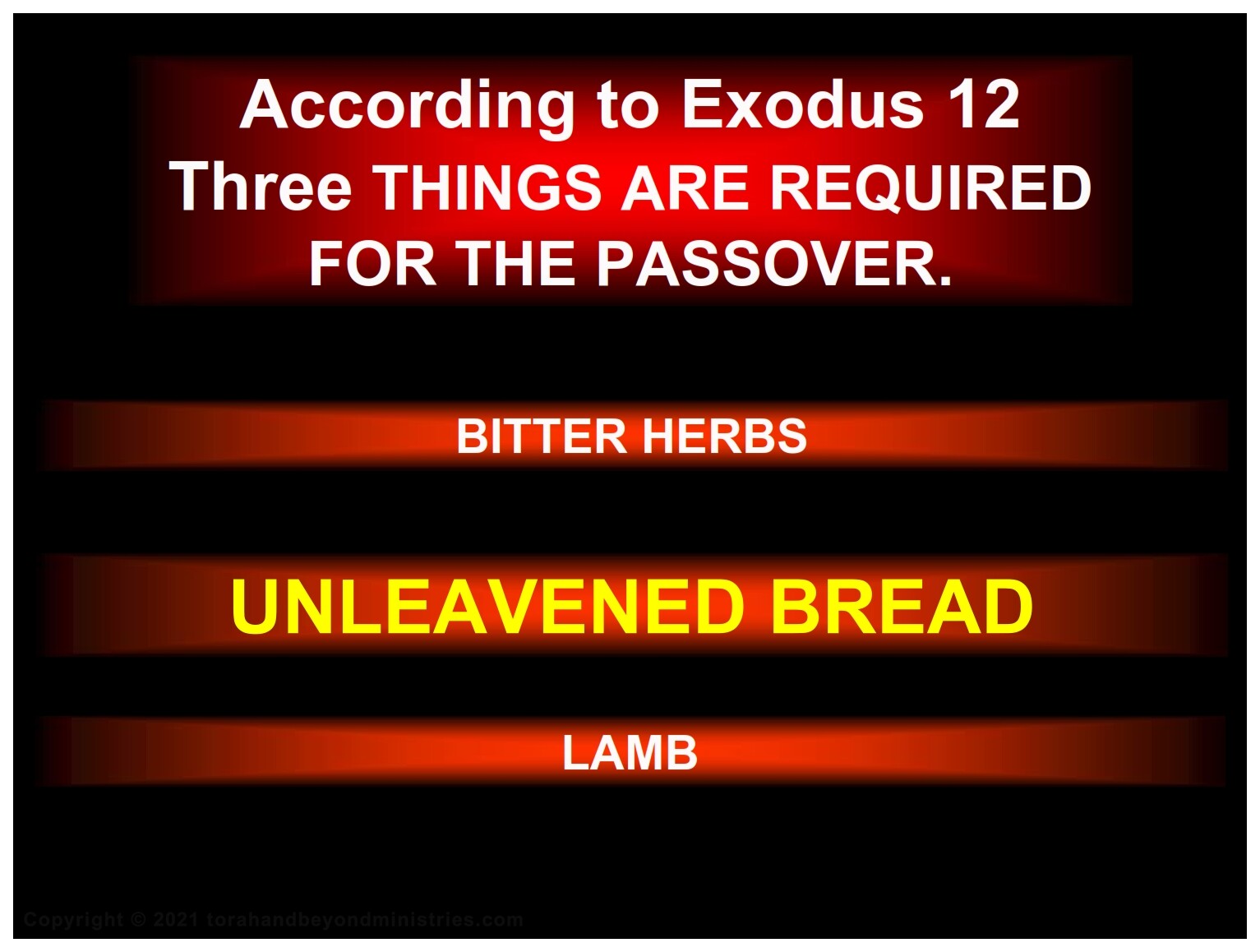
What kind of bread?
Barley was one of the first cultivated grains and was used in ancient Egypt to make bread and beer. Unleavened bread made from barley was heavy, filling, and healthy. In the Bible there are no specifications on how the unleavened bread was made except no leaven could be used. However throughout the millennia Jewish sages have added many rules and regulations about matzo. (Matzo, matza or matzah variant spellings)
In the western world matzo is thought of as a cracker type of bread, but it is only made that way for convenience and longer shelf life. It is also cooked according to Rabbinical law at extremely high temperatures to stop any leavening action. Unlike the hard matzo familiar to most Jews around the world, the Yemenite and Iraqi Jewish communities eat soft, pita-like matzahs, as was apparently the custom in most of the Jewish world until recent centuries.
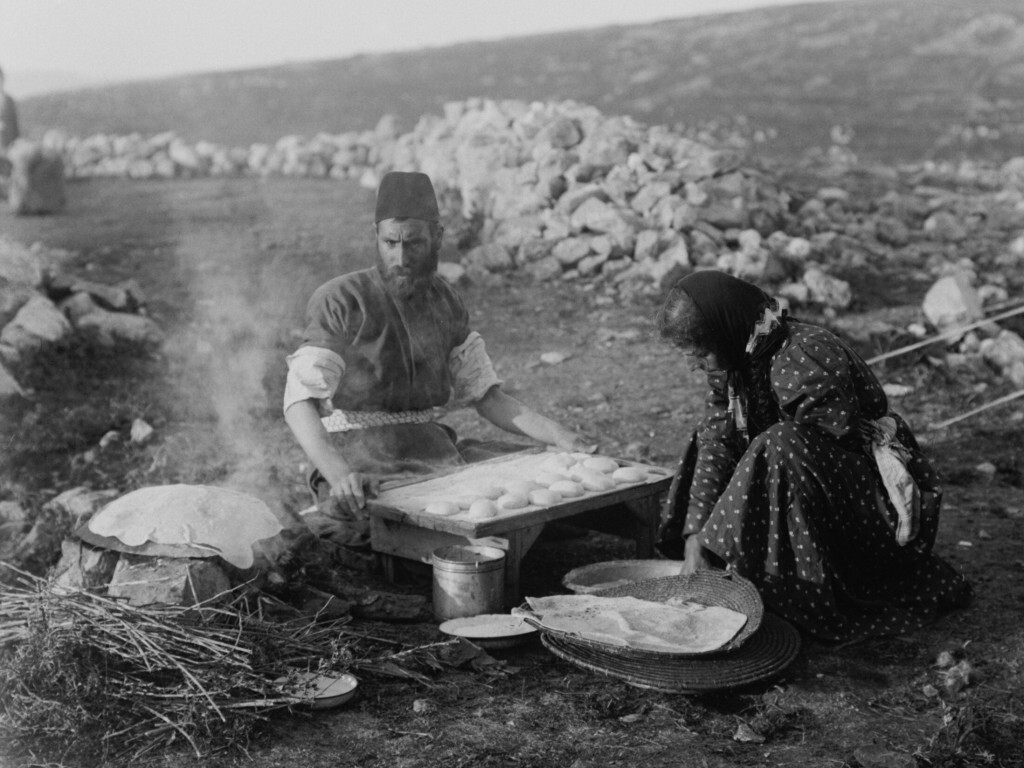
wlkat twum Mymy tebs
Seven days shall ye eat unleavened bread; even the first day ye shall put away leaven out of your houses: for whosoever eateth leavened bread from the first day until the seventh day, that soul shall be cut off from Israel.
Exodus 12:15
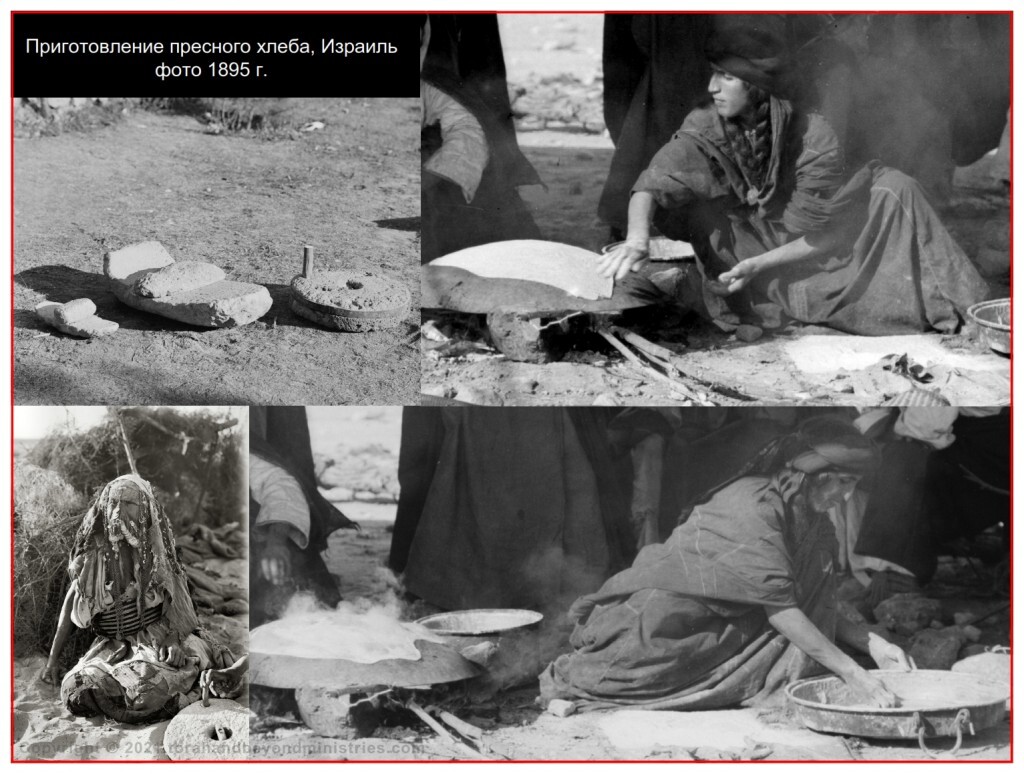
Modern Matzo in the industrialized world
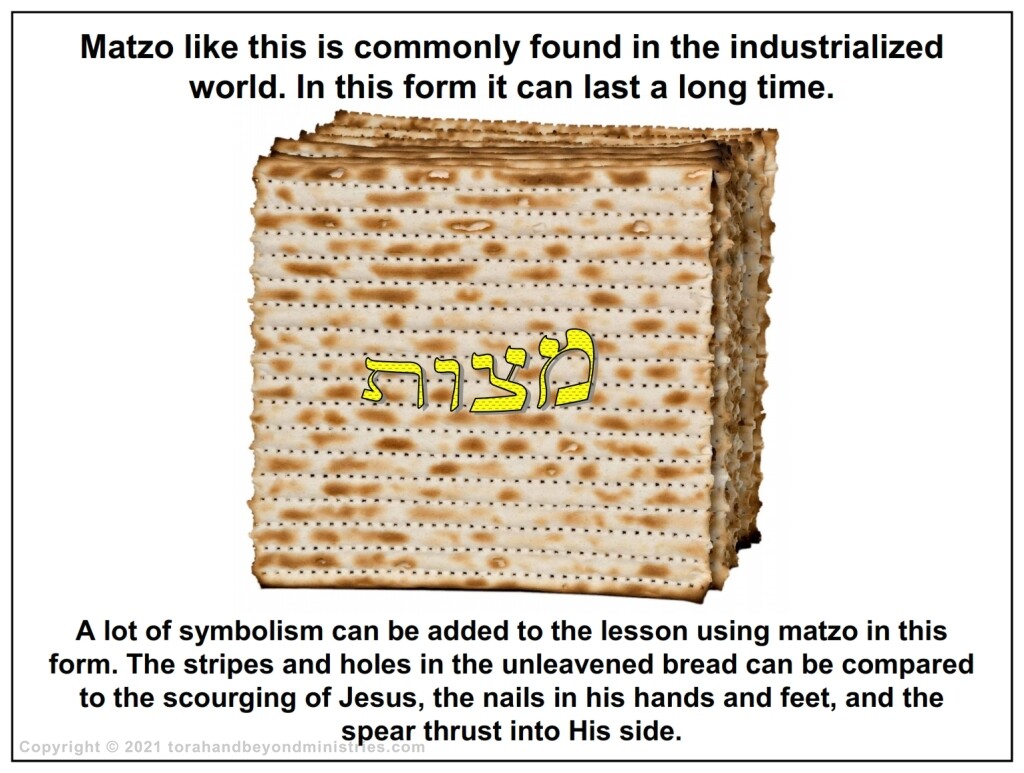
Fresh baked matzo has a much better taste than packaged matzo purchased at the store. One drawback to baking your own matzo is that it is very time consuming if you are serving a large crowd. Baking the flour water and oil bread in an oven produces a very crisp bread as compared to placing the dough on top of a hot piece of iron as is most common in ancient times and undeveloped parts of the world even today.
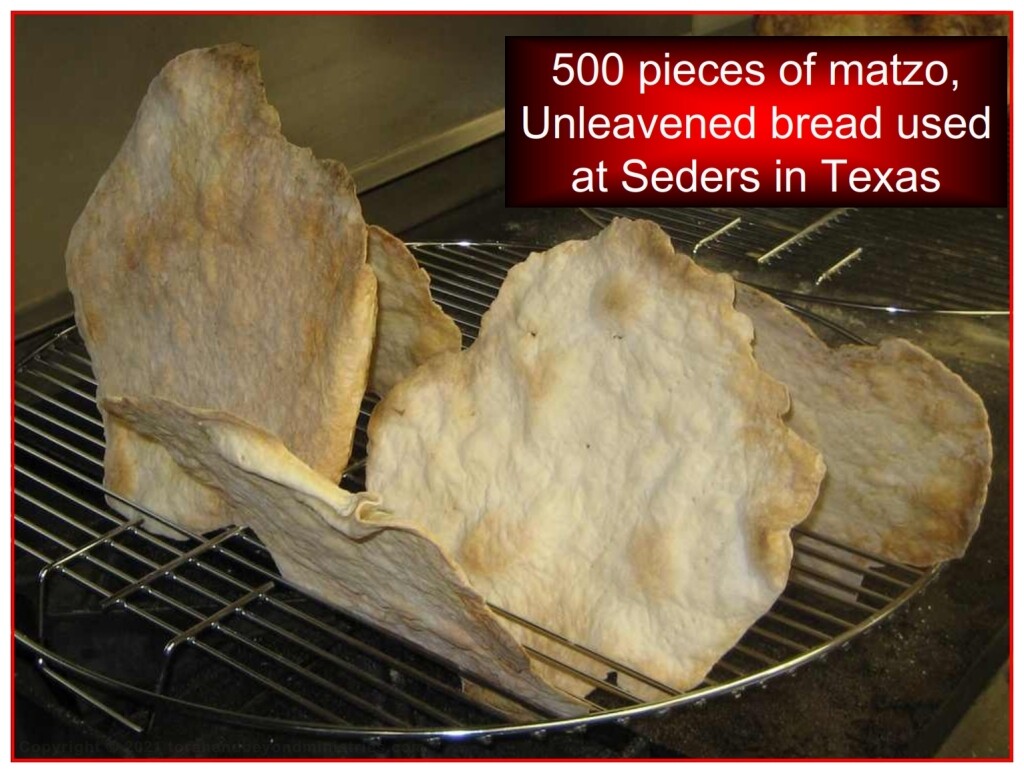
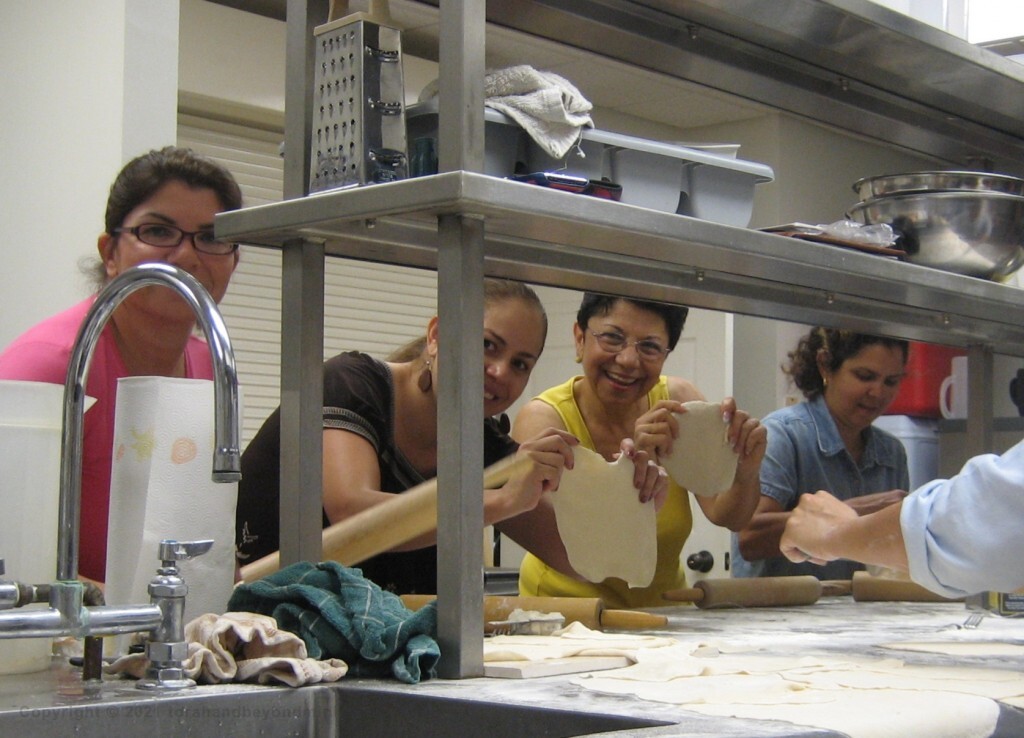
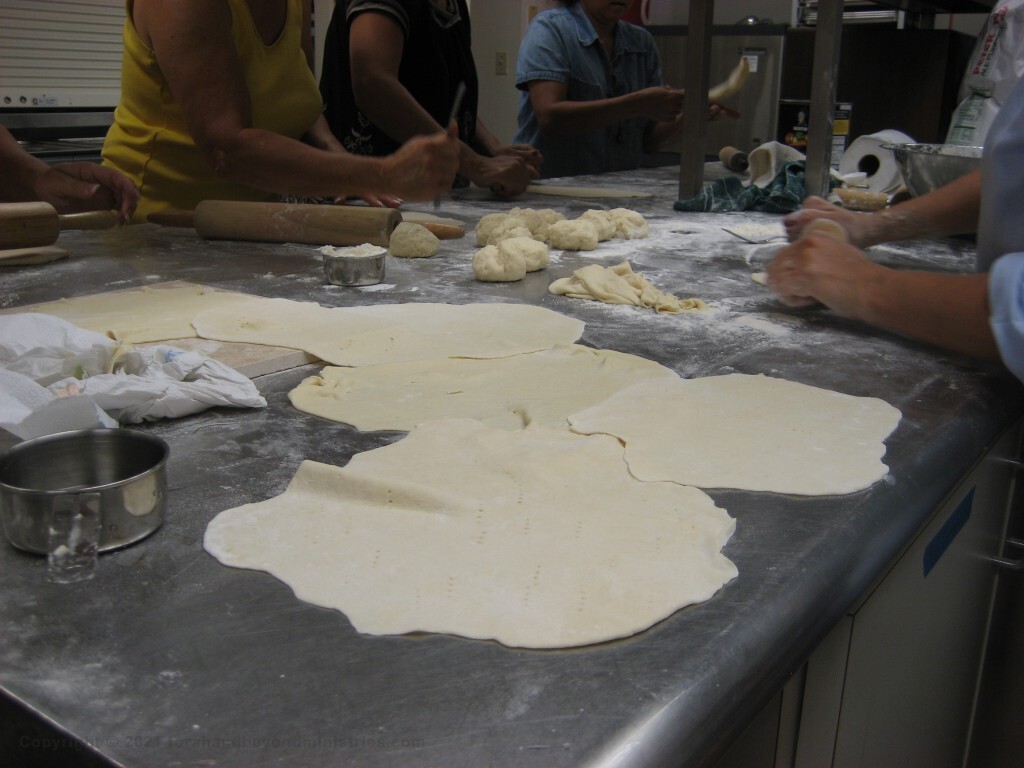
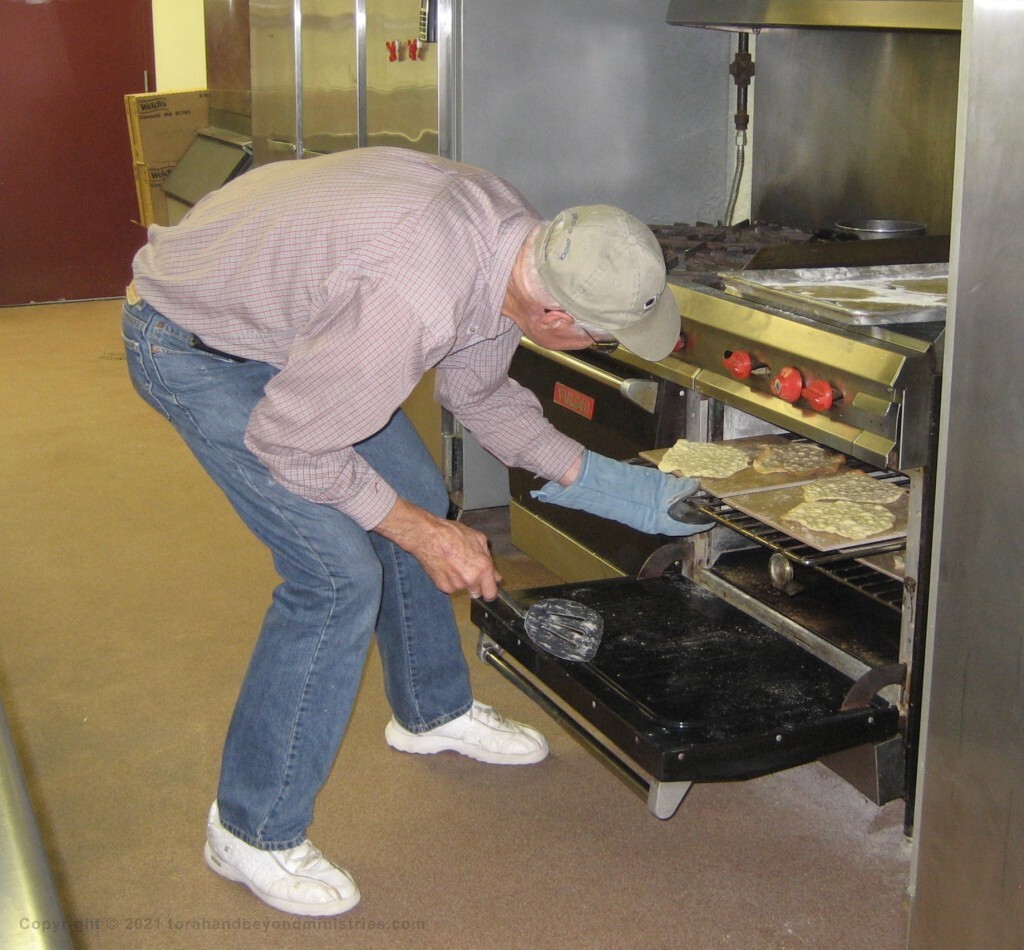
Two entire bakeries have been found in Giza, Egypt dating back 3,000 B.C. These bakeries show places to mill the grain, mix it, and ovens to bake the bread. Also, because of the dry climate in Egypt many loaves of bread have survived in the burial chambers and graves. (Note: After 5,000 years this bread would be considered stale.)
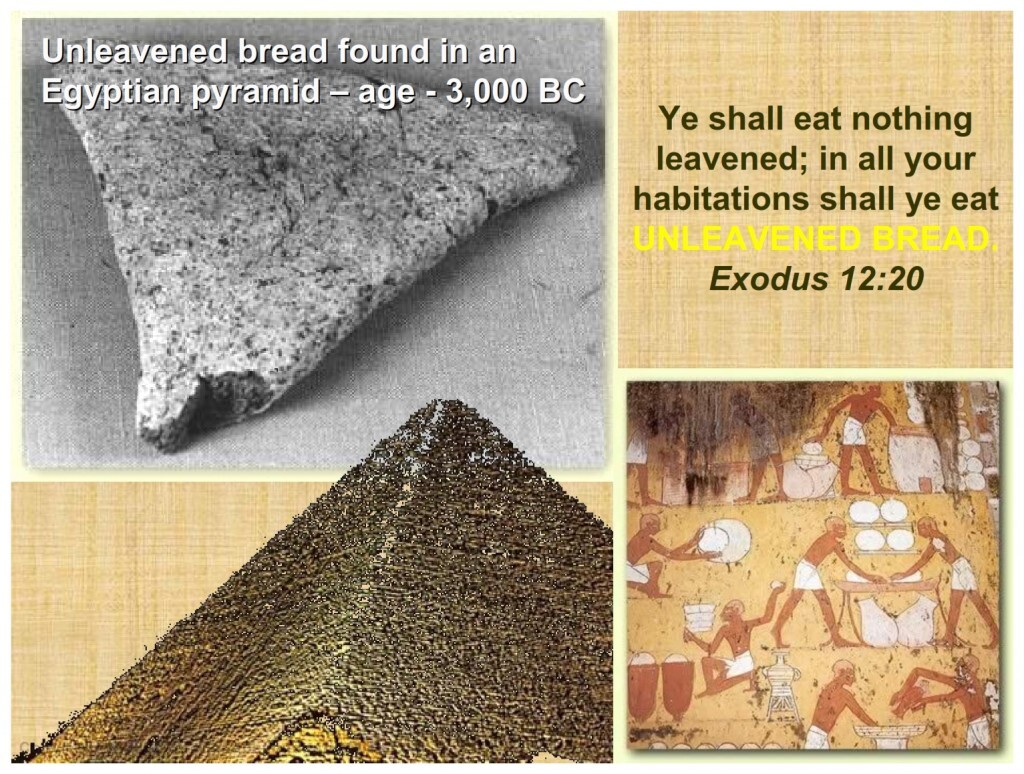
The oldest and most widely used matzo before industrialization was made with barley. In Egypt and Israel, barley was the first grain harvest which corresponds to the first two feasts; Passover and First Fruits.
And Pharaoh sent, and called for Moses and Aaron, and said unto them, I have sinned this time: the LORD is righteous, and I and my people are wicked. Intreat the LORD (for it is enough) that there be no more mighty thunderings and hail; and I will let you go, and ye shall stay no longer. And Moses said unto him, As soon as I am gone out of the city, I will spread abroad my hands unto the LORD; and the thunder shall cease, neither shall there be any more hail; that thou mayest know how that the earth is the LORD’S. But as for thee and thy servants, I know that ye will not yet fear the LORD God. And the flax and the barley was smitten: for the barley was in the ear, and the flax was bolled. But the wheat and the rie were not smitten: for they were not grown up. Exodus 9:27-32
“There is a lad here, which hath five barley loaves, and two small fishes:”
Just before the Passover and barley harvest Jesus fed 5,000 with five barley loafs and two small fish.
After these things Jesus went over the sea of Galilee, which is the sea of Tiberias. And a great multitude followed him, because they saw his miracles which he did on them that were diseased. And Jesus went up into a mountain, and there he sat with his disciples. And the passover, a feast of the Jews, was nigh. When Jesus then lifted up his eyes, and saw a great company come unto him, he saith unto Philip, Whence shall we buy bread, that these may eat? And this he said to prove him: for he himself knew what he would do. Philip answered him, Two hundred pennyworth of bread is not sufficient for them, that every one of them may take a little. One of his disciples, Andrew, Simon Peter’s brother, saith unto him, There is a lad here, which hath five barley loaves, and two small fishes: but what are they among so many? And Jesus said, Make the men sit down. Now there was much grass in the place. So the men sat down, in number about five thousand. And Jesus took the loaves; and when he had given thanks, he distributed to the disciples, and the disciples to them that were set down; and likewise of the fishes as much as they would. When they were filled, he said unto his disciples, Gather up the fragments that remain, that nothing be lost. Therefore they gathered them together, and filled twelve baskets with the fragments of the five barley loaves, which remained over and above unto them that had eaten. Then those men, when they had seen the miracle that Jesus did, said, This is of a truth that prophet that should come into the world. When Jesus therefore perceived that they would come and take him by force, to make him a king, he departed again into a mountain himself alone. John 6:1-15
It is simple to bake barley matzo for Passover. They are tasty, very filling, and nutritious. For the recipe see the recipe section of the Passover. Barley does not contain a lot of gluten, which means that on its own it is not good for making bread, unless unleavened bread is made. Because there is not a sufficient quantity of gluten the barley dough will not stick together as well as the wheat dough. For this reason the bread must be much thicker than wheat unleavened bread. The unleavened bread found in the pyramid in Egypt is probably barley as seen by the thickness of the bread.
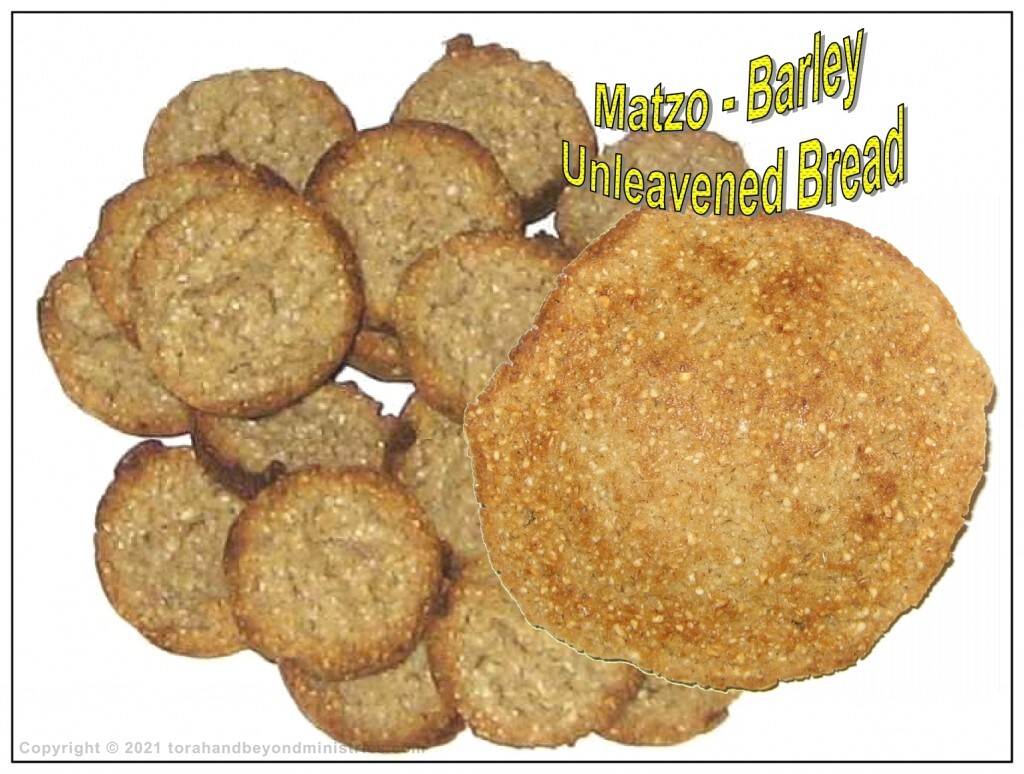
This 2,000 year old food pot was found empty along with several hundred others. It was found in a drain which connected the Temple mount and the Pool of Siloam. Later the pot was filled with an omer rme of barley, about 0.48 US dry gallon.
As The Lamb of God presented Himself, He sat down and shared a Passover meal with His disciples. Among other food items required for Passover, they probably had barley unleavened bread.
Now the feast of unleavened bread drew nigh, which is called the Passover. … Then came the day of unleavened bread, when the passover must be killed. And he sent Peter and John, saying, Go and prepare us the passover, that we may eat. And they said unto him, Where wilt thou that we prepare? And he said unto them, Behold, when ye are entered into the city, there shall a man meet you, bearing a pitcher of water; follow him into the house where he entereth in. And ye shall say unto the goodman of the house, The Master saith unto thee, Where is the guestchamber, where I shall eat the passover with my disciples? And he shall shew you a large upper room furnished: there make ready. And they went, and found as he had said unto them: and they made ready the passover. And when the hour was come, he sat down, and the twelve apostles with him. And he said unto them, With desire I have desired to eat this passover with you before I suffer: For I say unto you, I will not any more eat thereof, until it be fulfilled in the kingdom of God. And he took the cup, and gave thanks, and said, Take this, and divide it among yourselves: For I say unto you, I will not drink of the fruit of the vine, until the kingdom of God shall come. And he took bread, and gave thanks, and brake it, and gave unto them, saying, This is my body which is given for you: this do in remembrance of me.
Luke 22:1-19
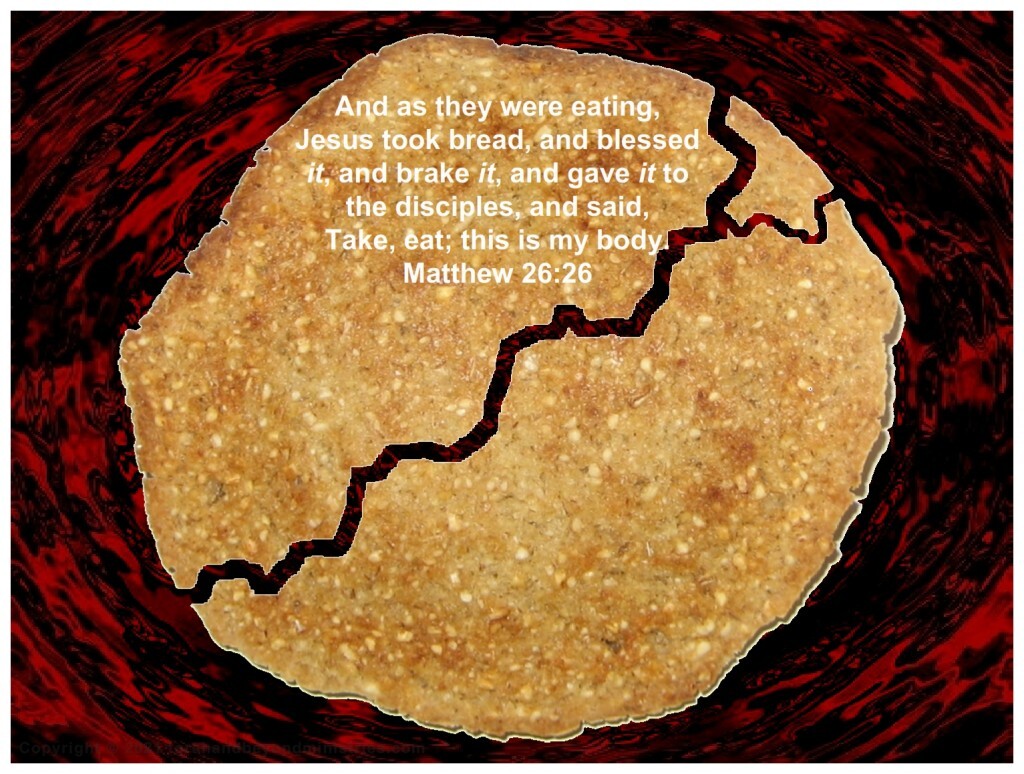
The broken matzo is in fulfillment of many passages in the Hebrew Scriptures that tell us about the suffering of The Messiah.
מי האמין לשׁמעתנו וזרוע יהוה על מי נגלתה
Yet it pleased the Lord to bruise him; he hath put him to grief: when thou shalt make his soul an offering for sin, he shall see his seed, he shall prolong his days, and the pleasure of the Lord shall prosper in his hand. He shall see of the travail of his soul, and shall be satisfied: by his knowledge shall my righteous servant justify many; for he shall bear their iniquities. Therefore will I divide him a portion with the great, and he shall divide the spoil with the strong; because he hath poured out his soul unto death: and he was numbered with the transgressors; and he bare the sin of many, and made intercession for the transgressors. Isaiah 53:10-12
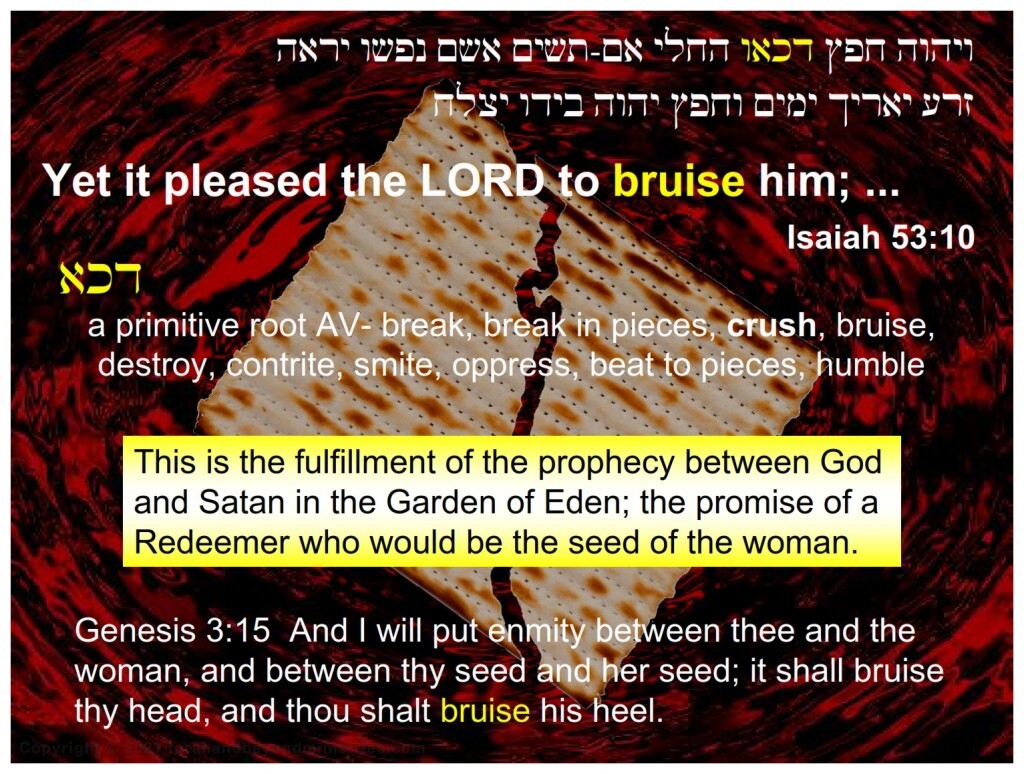
This scroll of Psalms was written in Israel about around 1980. It was written on vellum (cow skin) with a quill and iron gall ink. The small Synagogue that had this scroll said we could have it for our collection if we provided the finances to have another written for them.
It is opened to Psalms 22 which is in the right column and starts about a third of the way down.
Scrolls of Psalms are very rare and most Jewish people have never seen a scroll of Psalms. When The Scriptorium tried to acquire a complete set of scrolls that make up the TaNaKh, Hebrew Bible, we found there were six scrolls that had not been written for public use since the 8th. century: Psalms, Proverbs, Job, Daniel, Chronicles, Ezra/Nehemiah.
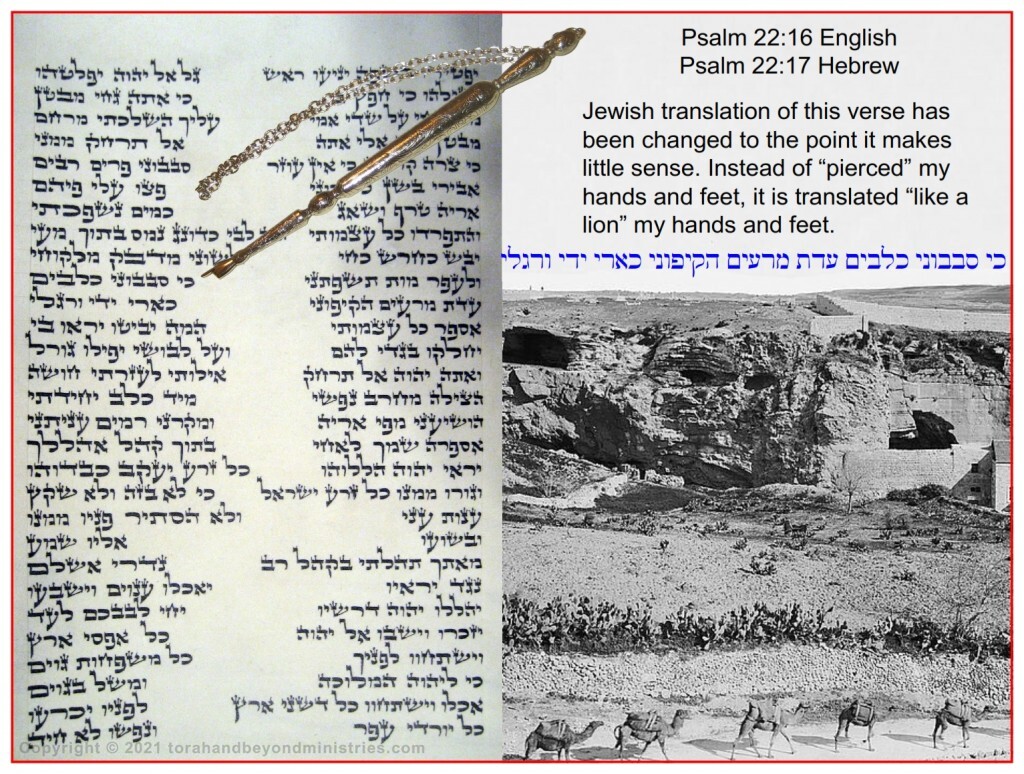
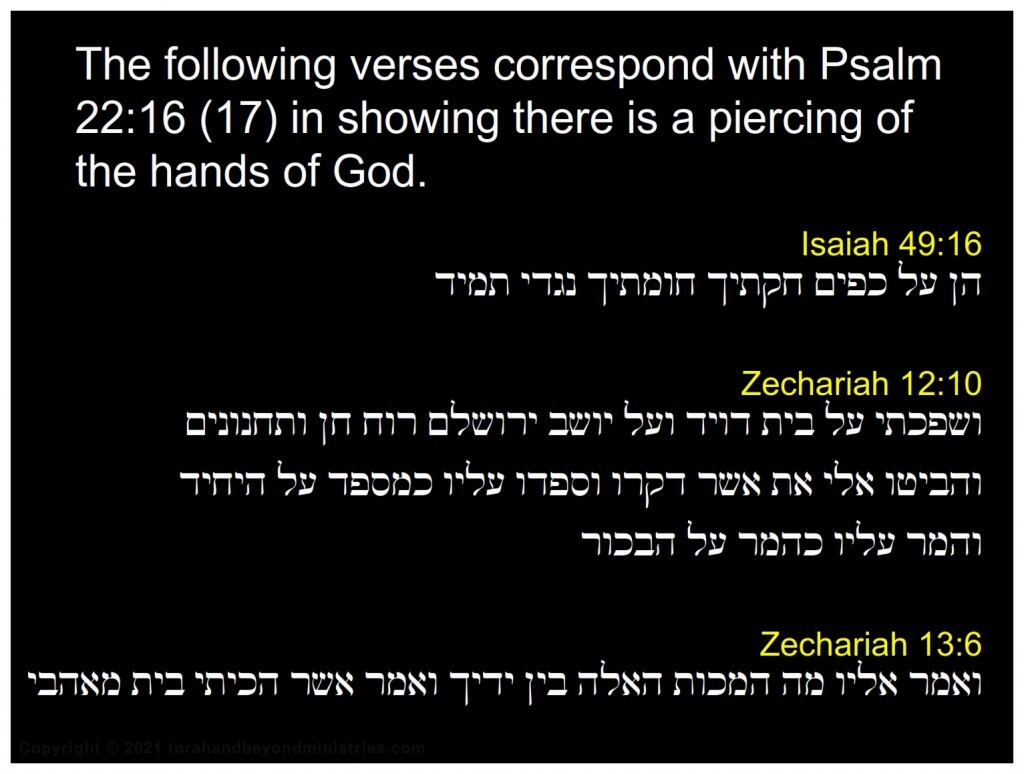
Crucified skeleton found near Jerusalem (1978) The Romans were adept at crucifixion, according to many historical sources. The first archaeological evidence of crucifixion was uncovered in 1978 when an ossuary (bone box, or receptacle) was found north of Jerusalem containing the bones of a man who had been crucified. His name was “Yehohanan, the son of Hagakol.” He is thought to have been between 24 and 28 years of age, and was about 5 feet 6 inches in height.
Both the ossuary and a replica of the heel bone are displayed in the Israel Museum. When Yehohanan was removed from the cross the nail pulled away from the wood. Remains of olive wood found between the head of the nail and the heel bone suggest that prior to penetrating the heel bone the nail was driven through a wooden plaque so as to increase the head of the nail thus making it difficult for the victim to free his legs from the upright.
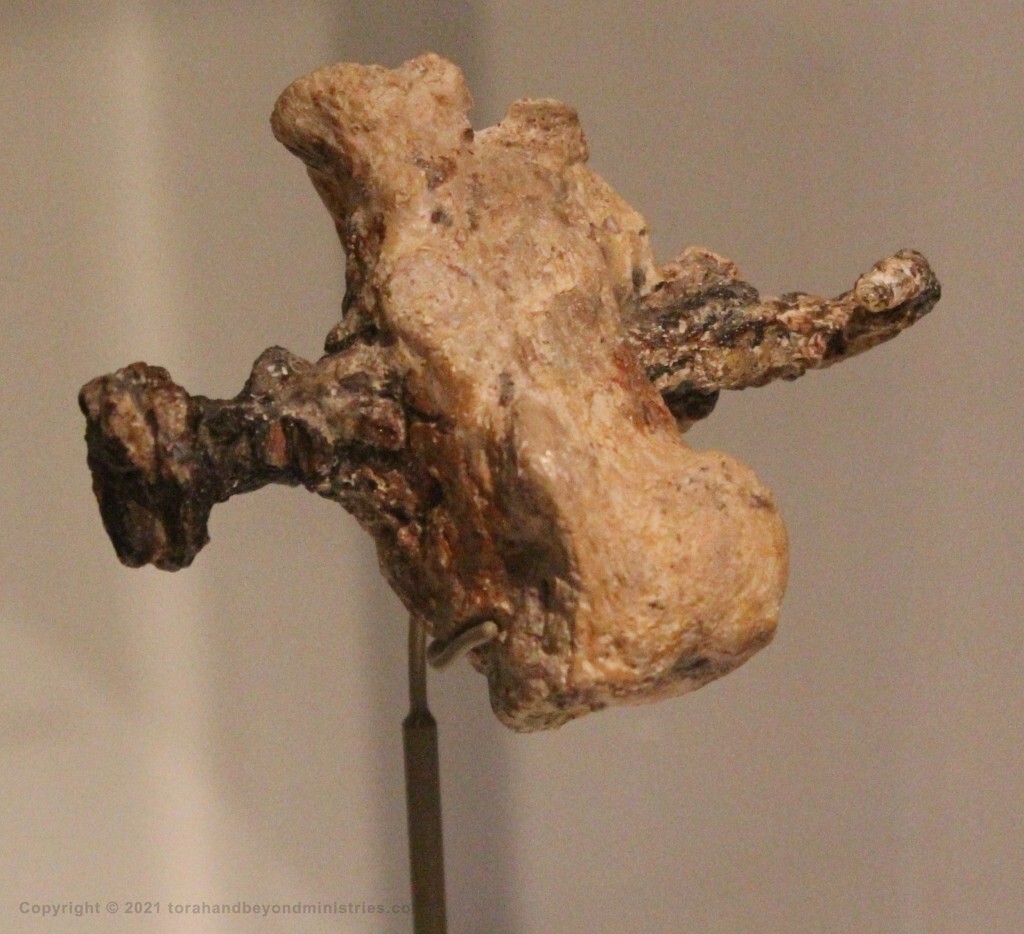
For dogs have compassed me: the assembly of the wicked have inclosed me: they pierced my hands and my feet. Psalm 22:16
כי סבבוני כלבים עדת מרעים הקיפוני כארי ידי ורגלי
Behold, I have graven thee upon the palms of my hands; thy walls are continually before me. Isaiah 49:16
הן על כפים חקתיך חומתיך נגדי תמיד
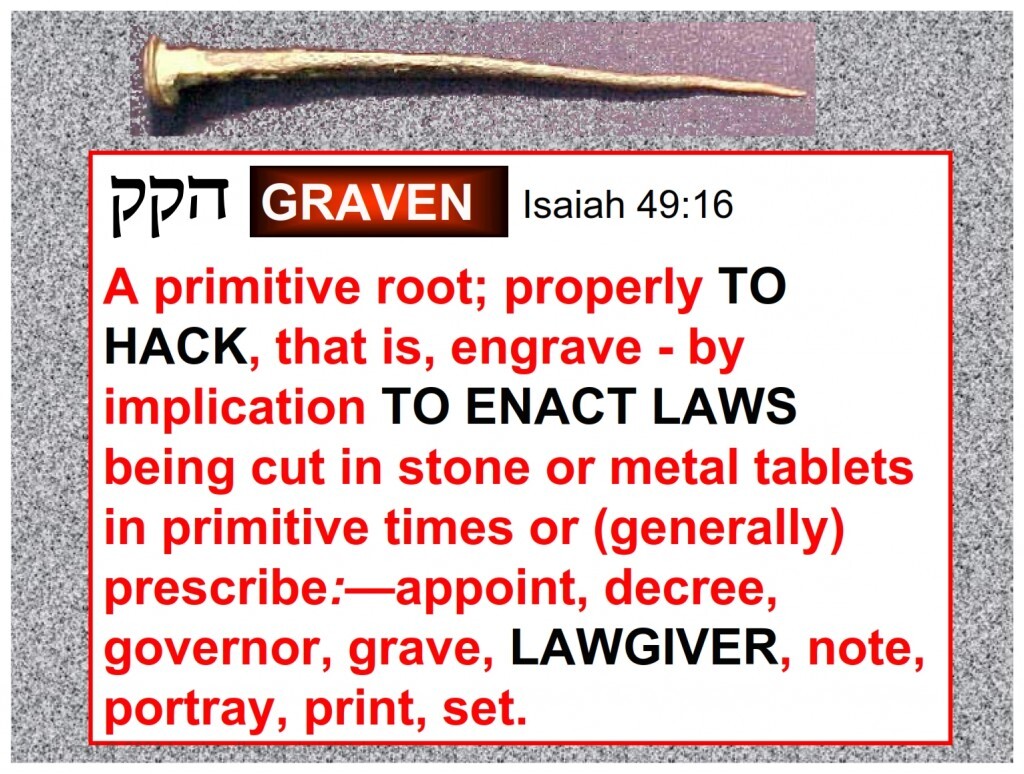
The following photograph is of a Hebrew Scroll of Isaiah which was written in Russia on sheep skin in the early 20th century. The Scroll was moved from Israel to our Scriptorium in America in 2005. The yad, pointer,is showing the verse in Isaiah 49:16 where it says “Behold, I have graven thee upon the palms of my hands;”
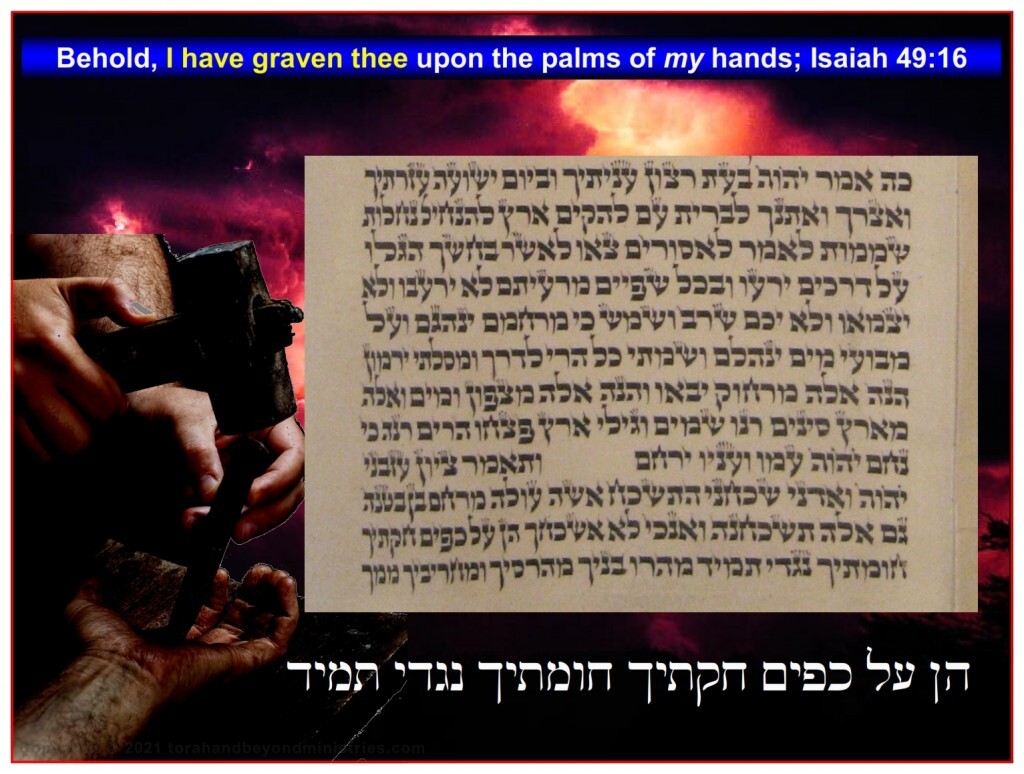
And I will pour upon the house of David, and upon the inhabitants of Jerusalem, the spirit of grace and of supplications: and they shall look upon me whom they have pierced,and they shall mourn for him, as one mourneth for his only son, and shall be in bitterness for him, as one that is in bitterness for his firstborn. Zechariah 12:10
And one shall say unto him, What are these wounds in thine hands? Then he shall answer, Those with which I was wounded in the house of my friends. Zechariah 13:6
The Jews therefore, because it was the preparation, that the bodies should not remain upon the cross on the sabbath day, (for that sabbath day was an high day,) besought Pilate that their legs might be broken, and that they might be taken away. Then came the soldiers, and brake the legs of the first, and of the other which was crucified with him. But when they came to Jesus, and saw that he was dead already, they brake not his legs: But one of the soldiers with a spear pierced his side, and forthwith came there out blood and water. And he that saw it bare record, and his record is true: and he knoweth that he saith true, that ye might believe. For these things were done, that the scripture should be fulfilled, A bone of him shall not be broken. And again another scripture saith, They shall look on him whom they pierced.
John 19:31-37
When the Church partakes of communion they are seeing an example of what The Messiah did to redeem us.
For I have received of the Lord that which also I delivered unto you, that the Lord Jesus the same night in which he was betrayed took bread: And when he had given thanks, he brake it, and said, Take, eat: this is my body, which is broken for you: this do in remembrance of me. 1 Corinthians 11:23-24
Unleavened bread should always be used for communion. In some parts of the world leavened bread is used. This is an example of believers moving further away from the “roots” of their faith and in this instance it is moving away from the lesson God gave us in
Exodus 12.
